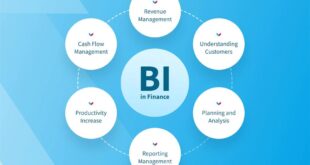The digital landscape has evolved rapidly in recent years. While there have been many positive developments, such as the rise of remote work, AI, and automation, there are also new challenges that every business must face.
Most notably, this involves data protection. Every business collects, analyzes, and uses huge amounts of data in the modern era, but it is vital that you know how to protect this data. These days, there are many sophisticated cyber threats that can make it hard to protect your data.
Additionally, tightening regulations means that every business must make sure that they are compliant with the latest laws to avoid penalties and legal issues. Here are a few of the best ways to protect your data in 2025.
Embrace Zero-Trust
In 2025, the “trust but verify” approach is no longer sufficient. Cybercrime is rampant and increasingly sophisticated, which means that you can take no risks. The zero trust model involves verifying every user, device, and network, no matter if they are inside or outside of the corporate perimeter.
With strict identity verification and multi-factor authentication, you can make sure that every request is validated before granting permission. This significantly reduces the risk of unauthorized access and minimizes the potential damage if a breach takes place.
Use Access Control
Similarly, you can reduce the risk of a data breach with the use of access controls. Role-based access control (RBAC) is smart, as it only grants employees access to the data that they need for their specific role and duties.
This reduces the attack surface and can provide protection against both internal and external threats. Just be sure to review and update access permissions on a regular basis, particularly when employees change roles within the business or leave the company.
Use Managed Detection & Response Services
Many businesses struggle to detect cyber threats in time in 2025 because they are so advanced. Companies often do not have the internal expertise or resources for 24/7 monitoring, which is why it is a good idea to use managed detection and response services from a cybersecurity specialist like Red Canary.
With a combination of AI-powered analytics, advanced detection tools, and human expertise, specialists like this can provide continuous monitoring, threat detection, and rapid response capabilities. This is one of the best ways to protect your business from external threats without the need to recruit your own internal security team (also a major expense).
Encrypt Data At Rest & In Transit
Sensitive information is always at risk these days, which is why it is a good idea to use data encryption as a security tactic. This means that data is unreadable if it is ever intercepted either at rest (stored on servers) or in transit (moving across networks).
A decryption key is needed to make the data readable, which safeguards your sensitive information and can also help with compliance. Just make sure that you use secure key management practices, rotate keys frequently, and keep keys stored separately from the data they are protecting.
Automate Patch Management
Outdated software can leave the door open for cybercriminals, which is why you must make sure that software and operating system updates are never delayed. Automated patch management ensures that the latest version is installed as soon as it is made available.
This is important because software updates will contain security upgrades to address security vulnerabilities while also improving performance and stability.
Invest In Cybersecurity Training For Employees
Often, data breaches occur not because of a lack of cybersecurity solutions but because of human error. Therefore, businesses should invest in ongoing cybersecurity training that covers best practices, spotting common scams, and data protection methods.
This will include things like password hygiene, backing up data externally, and how to spot phishing scams (including deepfake content). Keep in mind that social engineering is becoming increasingly sophisticated, so you need to create a culture of security awareness and provide ongoing training to protect against the latest methods and technologies.
These are a few of the best practices to protect your sensitive business data. In 2025, there are many different threats to be aware of, so you need to know how to protect your data, comply with the latest regulations, and maintain customer trust.
 khamush.com Lifestyle | Motivation | Poems
khamush.com Lifestyle | Motivation | Poems



